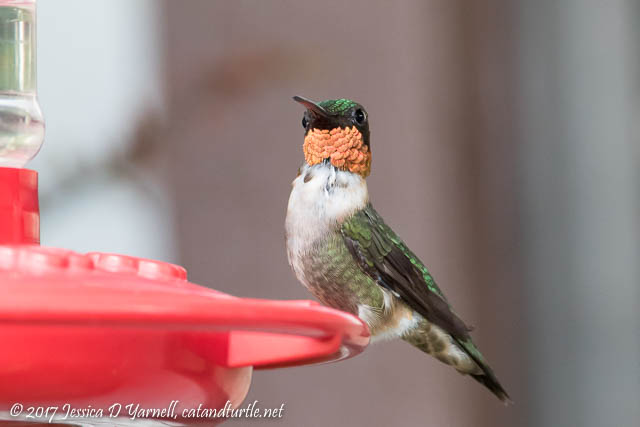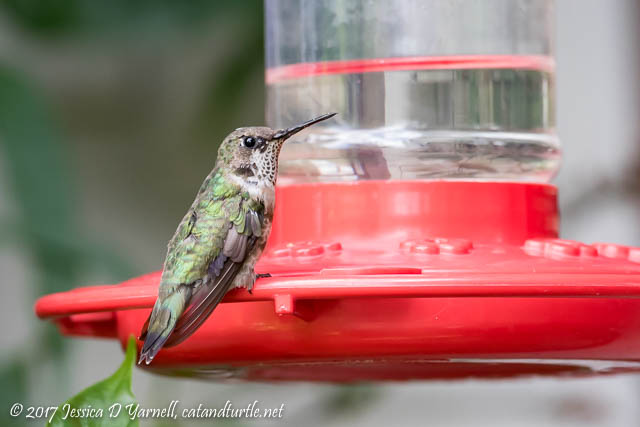My mom is so lucky. She has hummingbirds in her backyard almost year round! In comparison, I do cartwheels when one of my hummers sticks around for a week.
My parents’ backyard is a hummingbird paradise. They have planted tons of native flowers and hummingbird-attracting bushes over the years. They also maintain several hummingbird feeders, especially during migration when the birds might need some extra sugar energy. To take these pictures, I maneuvered myself and my camera and tripod into a small spot between a crape myrtle tree and their fence – leaving little room for movement, but positioning me very close to the feeder, in a way that I wasn’t bothering the birds. The result?

I only had to wait a few minutes before my first hummingbird showed up at the feeder. A male Ruby-throated hummingbird, and I was so happy when he flashed his bright red gorget at me!
The real target of my quest on this day was my mom’s mystery hummingbird. She could see from her window that the poor bird had lost most of its flight feathers. Its visits at the feeders were abnormally long. The bird also didn’t quite match the description of a female Ruby-throated (although it’s hard to tell, with its feathers in sad shape.). So I was sent out to get a good photo!

I’m not familiar enough with hummingbirds to venture a guess on the ID. Ruby-throated Hummingbirds are the most common in Florida, although I’ve never seen a Ruby-throated with a scalloped throat. If you can help me identify this little guy, please post a comment!
If you’ve never been close to a hummingbird before, it’s amazing to watch them up close. They are such active little birds. Their whole bodies quiver as they nectar from the feeder. I managed to catch small videos of each of these birds, and I edited them together. The poor little mystery bird spent significantly more time gulping nectar than his healthy counterpart. My mom will definitely keep feeders out while her little patient is recuperating from his feather problems!
[vimeo id=”206707328″]

2 thoughts on “Hummingbirds at My Mom’s Feeders”
Hmm, I have the Stoke’s Beginner’s Guide to Hummingbirds and it could be a female Rufous Hummingbird (p 57). I’m probably wrong, though.
I was just thinking this past week that I needed to put my feeders out. I’m off to make nectar now!
Thanks Nathalie! I hope the hummers are finding your nectar.
Comments are closed.